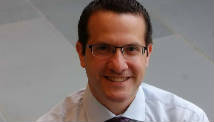Largest structure challenges Einstein's smooth cosmos
One-twentieth the diameter of the observable universe, a group of galaxies dents the cherished idea that the cosmos is uniform at large scales
Straitjacket drug halts herpes virus's escape stunt
Herpes infections recur as the virus is adept at evading our defences, but a new drug that suppresses enzymes exploited by the virus seems effective
Zoologger: Mouse eats scorpions and howls at the moon
Super-aggressive grasshopper mice are not put off by the deadly venom of the scorpions they feast on - in fact, nothing much seems to scare them
Sand tsunami pictured striking Australian coast
The spectacular wall of sand and dust appears to block out the sun like a giant wave
Astrophile: Zombie stars feed on Earth-like exoplanets
We can now learn what planets around other stars are made of - by looking at the atmospheres of white dwarfs that have swallowed up their worlds
Life will find a way, even in the midst of a hurricane
Not for the faint-hearted: to sample the microbiome of a hurricane, fly a jetliner through it
Physics not biology may be key to beating cancer
Billions of dollars spent on cancer research have yielded no great breakthrough yet. There are other ways to attack the problem, says physicist Paul Davies
Feedback: Return of nominative determinism
The last nominative determinism stories, salads of gizzards and his chestnuts, Australian graduates in outer space, and more
A comeback for virtual reality? Inside the Oculus Rift
The Oculus Rift promises an immersive gaming experience like no other. Niall Firth gets his head in the game and gives it a try
Is the US facing Flu-maggedon?
The US flu season has come early this winter, leaving many hospitals overwhelmed. But is the situation really any worse than usual?
Your body's insights into life and cosmos
The Universe Within by Neil Shubin tells stories from your body about our species, planet and universe. PLUS: a cautionary tale of inspirational scientists
Hands on with Leap Motion's gestural interface
The makers of the ultra-precise gestural interface talk big about killing off the mouse. But it looks like more than just bluster
Personal assistant for your emails streamlines your life
GmailValet aims to use crowdsourcing to give everyone a personal assistant to help deal with their emails - it could cost as little as $2 a day
DNA 'identichip' gives a detailed picture of a suspect
A new microchip-based DNA tester can identify multiple traits of an individual at a time, even where their DNA is scarce
Most fundamental clock ever could redefine kilogram
Physicists have created the first clock with a tick that depends on the hyper-regular frequency of matter itself
Nanomachine mimics nature's protein factory
An artificial ribosome that assembles proteins and peptides could make it much easier to manufacture antibiotics and exotic new materials
Muscle mimic pulls electricity from wet surface
A plastic film that repeatedly curls up and flips over when wet could power devices in remote areas or sensors embedded in sweaty clothing












